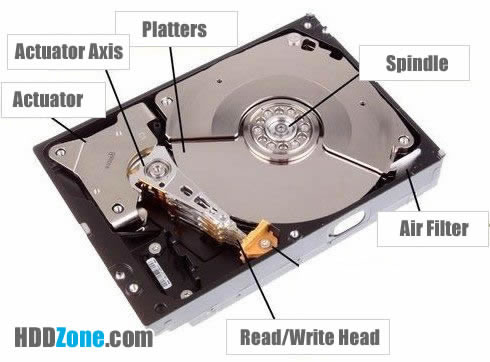
The outer core is located about 1800 milesbeneath the crust and is about 1400 miles thick. to 9000 degrees F.) The outer core is so hot that the metals in it are all in the liquid state. The core of the Earth is like a ball of very hot metals. A conveyor belt in a factory moves boxes like the convection currents in the mantle moves the plates of the Earth.
Hard drive page layers diagram free#
The crust gets a free ride with these currents. When the convection currents flow in the mantle they also move the crust. The next time you heat anything like soup or pudding in a pan you can watch the convection currents move in the liquid. Convection currents are caused by the very hot material at the deepest part of the mantle rising, then cooling, sinking again and then heating, rising and repeating the cycle over and over. Many geologists believe that the mantle "flows" because of convection currents. The mantle is made of much denser, thicker material, because of this the plates "float" on it like oil floats on water. The movement of the mantle is the reason that the plates of the Earth move! The temperature of the mantle varies from 1600 degrees Fahrenheit at the top to about 4000 degrees Fahrenheit near the bottom! This flow is due to great temperature differences from the bottom to the top of the mantle. This layer of rock even flows like asphalt under a heavy weight. The mantle is composed of very hot, dense rock. It is the largest layer of the Earth, 1800 miles thick. The mantle is the layer located directly under the sima. The asthenosphere is the part of the mantle that flows and moves the plates of the Earth. The layer below the rigid lithosphere is a zone of asphalt-like consistancy called the Asthenosphere. The crust and the upper layer of the mantle together make up a zone of rigid, brittle rock called the Lithosphere. Because of this the continents ride on the denser oceanic plates. The oceanic crust consists of a volcanic lava rock called basalt.īasaltic rocks of the ocean plates are much denser and heavier than the granitic rock of the continental plates. The continental crust is composed mostly of granite. The crust is composed of two basic rock types granite and basalt. The seven continents and ocean plates basically float across the mantle which is composed of much hotter and denser material. Notice how thin the crust of the Earth is in comparison to the other layers. When this occurs an Earthquake is the result! The pressure builds and the rock bends until it snaps. These plates usually move along smoothly but sometimes they stick and build up pressure. The plates "float" on the soft, plastic mantle which is located below the crust. The crust of the Earth is broken into many pieces called plates. You can bake a loaf of bread in your oven at 350 degrees Fahrenheit, at 1600 degrees F. The temperatures of the crust vary from air temperature on top to about 1600 degrees Fahrenheit (870 degrees Celcius) in the deepest parts of the crust.

The crust is only about 3-5 miles (8 kilometers) thick under the oceans(oceanic crust) and about 25 miles (32 kilometers) thick under the continents (continental crust). It is very thin in comparison to the other three layers.
Hard drive page layers diagram skin#
The Earth's Crust is like the skin of an apple. The Outer and Inner Cores are hotter still with pressures so great that you would be squeezed into a ball smaller than a marble if you were able to go to the center of the Earth!!!!!! The mantle is much hotter and has the ability to flow. The crust is the layer that you live on, and it is the most widely studied and understood. Because of this, the crust is made of the lightest materials (rock- basalts and granites) and the core consists of heavy metals (nickel and iron).

Many geologists believe that as the Earth cooled the heavier, denser materials sank to the center and the lighter materials rose to the top. The Earth is composed of four different layers.


 0 kommentar(er)
0 kommentar(er)
